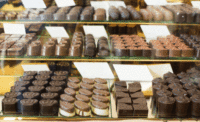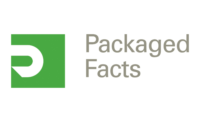Packaged Facts: Premium chocolate influences innovation in candy, food and beverage industries
Premium chocolate dollar sales grew by 5 percent over the last year.

Ingredient and flavor innovation in the premium chocolate sector continues to influence innovation in the overall candy market and in the food and beverage industries, a leading market researcher says.
In the 11th edition of “Chocolate Candy Market in the U.S.,” Packaged Facts, a division of MarketResearch.com, reports that premium chocolate makes up just 18 percent of total chocolate dollar sales and 14 percent of unit sales, but it still leads the way in developing flavor trends and new product formulations, particularly in the use of clean-label ingredients.
“Product claims usually also note natural ingredients and, to an increasing degree, ethical certification,” says David Sprinkle, research director of Packaged Facts. “Premium chocolate manufacturers aim for higher quality presentations, which are goals spilling over into other segments of the food and beverage market.”
The report discusses marketing and innovation strategies of “everyday” chocolate manufacturers and of major players in the premium sector, including Godiva, Lindt and Ghirardelli. While many stick to well-established product forms with periodic flavor additions, premium brands are also seeking methods to become more accessible, Packaged Facts says.
More specifically, the report points to Lindt’s acquisition of Russell Stover and the launch of Lindt’s moderately-priced Hello line. Godiva, meanwhile, has begun offering soft-serve ice cream and frozen drinks at its retail boutiques in hopes of appealing to a more general subset of consumers. Premium producers have also started using bite-sized and stand-up pouches, tactics that originated with mass market brands.
Smaller craft and artisanal chocolatiers also continue to advance innovation, Packaged Facts says. Ingredient quality and purity remain important, and ingredient origins are increasingly stressed, either through the inclusion of rare and exotic ingredients or use of ingredients from sources local to the manufacturer.
Packaged Facts predicts premium chocolate will spur continued growth in the overall U.S. chocolate market. Everyday chocolate dollar sales have remained flat, but premium chocolate dollar sales grew by 5 percent over the last year ending April 17, 2016.
To purchase the report or for more information, including the table of contents and the abstract, visit the Packaged Facts website.
Looking for a reprint of this article?
From high-res PDFs to custom plaques, order your copy today!






